Applying the Catch-MSY model to the stock assessment of the northwestern Pacifi c saury Cololabis Saira*
SHI Yongchuang , HUA Chuanxiang , ZHU Qingcheng HUANG Shuolin , , FENG Huili
1 College of Marine Culture and Law, Shanghai Ocean University, Shanghai 201306, China 2 College of Marine Sciences, Shanghai Ocean University, Shanghai 201306, China
3 National Engineering Research Center for Pelagic Fishery, Shanghai 201306, China
4 Key Laboratory of Sustainable Exploitation of Oceanic Fisheries Resources, Ministry of Education, Shanghai 201306, China 5 Institute of Marine Policy & Law, Shanghai Ocean University, Shanghai 201306, China
Abstract The Pacifi c saury ( Cololabis saira) is one of the major harvested species in the temperate waters of the northwestern Pacifi c Ocean (NPO). The Catch-MSY model uses catch data and basic life history information to estimate the Maximum Sustainable Yield (MSY) for data-limited fi sheries. Since there is considerable uncertainty in the current status of the Pacifi c saury stock in the NPO, the Catch-MSY model was used in this study to estimate MSY on the basis of catch data and life history information from the North Pacifi c Fisheries Commission (NPFC). During the process, 17 scenarios, according to diff erent prior distributions of the intrinsic rate of increase ( r) and carrying capacity ( K), were set for sensitivity analysis. Moreover, the infl uence of diff erent catch time series and diff erent process errors were taken into account. The results show the following: (1) there was a strong negative correlation relationship between ln( r) and ln( K); the MSY increases with an increase in the lower limit of r; (2) The time series of catch data had a limited impact on the assessment results, whereas the results of the model were sensitive to the annual catch in the fi rst and last years; (3) The estimated MSYs of the Pacifi c saury were 47.37×10 4 t (41.57×10 4 t to 53.17×10 4 t) in scenario S1A and 47.53×10 4 t (41.79×10 4 t to 53.27×10 4 t) in scenario S1B. Given the uncertainty of the Catch-MSY model, maintaining a management target between 50×10 4 t and 70×10 4 t was a better management regulation. This study shows that the Catch-MSY model is a useful choice for estimating the MSY of data-limited species such as the Pacifi c saury.
Keyword: Cololabis saira; Catch-MSY model; intrinsic rate of increase; maximum sustainable yield; northwest Pacifi c Ocean
1 INTRODUCTION
The Pacifi c saury (Cololabissaira) is one of the most commercially important pelagic species in the northwest Pacifi c Ocean (NPO) (Sun et al., 2003; Tian et al., 2004). Japanese fi sheries initially exploited the species in the early 1950s, and in recent years, most catches of the Pacifi c saury are from Japan, Russia, South Korea, and China (including Taiwan, China); the total catch has been increasing since 1990s from 15.8×104t in 1998, 16.0×104t in 1999 to 60.7×104t in 2008 and 62.1×104t in 2014 (Suyama et al., 2012; North Pacifi c Fisheries Commission (NPFC), 2017; Shi et al., 2018). According to the FAO (2016), the total catch of the Pacifi c saury was 62.16×104t, accounting for 2.83% of the NPO (2 196.77×104t). In 2003, fl eets of mainland China began exploratory fi shing to investigate the abundance of the Pacifi c saury in the NPO and the number of fi shing vessels reached 44 in 2014 (Yang et al., 2005; Yu et al., 2006). The annual catch of the Pacifi c saury by Chinese fl eets varied from 2.32×104t in 2013 to 6.30×104t in 2016, with an average of 5.27×104t, which accounted for 11.85% of the global production (FAO, 2016). The Pacifi c saury is a short-lived species, and its yearly biomass is infl uenced by environmental variables in the NPO. Sakurai et al. (2000) suggested that the eff ects of physical and biological environmental variables on spawning and nursery grounds played a signifi cant role in recruitment success and contributed to variations in the stock abundance of short-lived species such as the Pacifi c saury. Iwahashi et al. (2006) observed that both the locations and spawning intensities change every season, and sea surface temperature (SST) is one of the most important factors on the spawning ground locations of the Pacifi c saury. Ito et al. (2004) also stated that changes in the SST could directly aff ect the Pacifi c saury through bioenergetics and movement. With the global development of Pacifi c saury fi sheries, the number of fi shing vessels has been increasing, and Pacifi c saury fi sheries have become an important part of the northwestern Pacifi c fi shery industry. Meanwhile, because of the eff ects of increasing fi shing eff orts, marine environment, and climate change, Pacifi c saury resources fl uctuated, and fi shing production has undergone annual changes (Tian et al., 2003; Nakaya et al., 2010; Shi et al., 2019). The NPFC established the Pacifi c saury working group in 2015 and listed the Pacifi c saury as a priority species (Zavolokin, 2018). Thus, the conservation and scientifi c management of Pacifi c saury resources have attracted widespread attention from scholars of global fi shery resources, and it is necessary to determine appropriate methods for estimating the maximum sustainable yield (MSY) for this noteworthy species.
A precise stock assessment of the Pacifi c saury will contribute to the sustainable development of its commercial fi shery, resource management, and oceanic ecosystem studies (Jiao et al., 2011; Punt et al., 2011; Guan et al., 2016). However, the lack of long-term sequence age structure data and imperfect biological research make it diffi cult to evaluate the stock status of the Pacifi c saury using standard stock assessment models (Magnusson et al., 2007; Punt, 2011; Wang et al., 2016). Since the quality of fi shery statistics cannot be solved in a short period of time, regional fi sheries management organizations have determined that the data-poor approach is an appropriate research direction for the MSY estimation of data-limited fi sheries (Restrepo et al., 1998; Carruthers et al., 2014).
Catch-based methods are widely used for datapoor fi sheries. For example, the purpose of depletioncorrected average catch (DCAC) is to estimate yields. DCAC is a one-parameter production model that is facilitated by supplementary information on quantities. This model was constructed based on the potential yield formula of Alverson and Pereyra (1969) and was improved by MacCall (2009). The performance and application of the DCAC model was tested by Wetzel and Punt (2011), Carruthers et al. (2014), and Arnold and Heppel (2015). Further, the depletion-based modifi cation of a stochastic-stockreduction analysis (DB-SRA) was developed by Dick and MacCall (2011); however, it required knowledge of the entire exploitation history. The application of the model considerably improves the understanding of current stock biomass and potential productivity (Dick and MacCall, 2011). Nonetheless, both the DCAC and the DB-SRA were limited in that these models are not suitable for species that suff er from higher natural mortality, such as small, fast-growing, or annual fi shes (MacCall, 2009). Unfortunately, the Pacifi c saury is a short-lived species with a typical lifespan of less than two years. In 2013, Martell and Froese designed the Catch-MSY model, which utilizes resilience for data-poor stocks, and tested it on 146 stocks. The authors concluded that the method’s estimates for the MSY were fairly robust and agreed with the MSY estimates derived from full stock assessments. Further, the Catch-MSY method requires lesser data compared to other methods (Froese et al., 2012; Chrysafi and Kuparinen, 2016). Consequently, this model may be a good choice for the MSY estimation of the Pacifi c saury.
In recent years, relevant studies on fi shing gear and methods (Yu et al., 2006; Xia, 2008; Shi et al., 2016, 2018), distribution of fi shing grounds (Iwahashi et al., 2006; Hua et al., 2010; Tseng et al., 2013), and basic biology (Zhang et al., 2013) of the Pacifi c saury have been conducted. However, the stock of Pacifi c saury in the NPO still lacks a scientifi c stock assessment. This study used the Catch-MSY method to estimate the MSY of the Pacifi c saury stock in the NPO. The sensitivity of the model parameters was analyzed with biological information. Subsequently, management suggestions were proposed based on the results, thereby providing sound theoretical support for the development and management of Pacifi c saury fi shery.
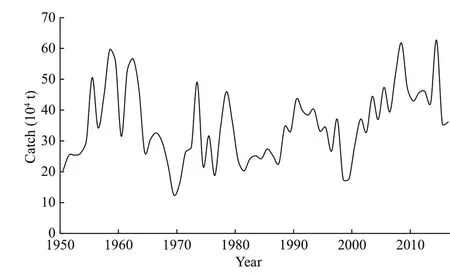
Fig.1 Trend of Pacifi c saury catches in the NPO
2 DATA AND METHOD
2.1 Fishery data
The catch data used in this study were downloaded from the NPFC Yearbook (NPFC, 2018). The time series of catches are from 1950 to 2016. The catch data trend of the Pacifi c saury is shown in Fig.1.
2.2 The Catch-MSY model
In this study, the Catch-MSY model is based on the Schaefer production model, which was developed to calculate annual biomass (Schaefer, 1991). The basic biomass dynamics are governed by Eqs.1 and 2:

whereBt+1is the biomass in the subsequent yeart+1,Btis the current biomass, andCtis the catch in yeart,Kdenotes the carrying capacity of the stock habitat, andrmeans the intrinsic rate of increase. A lognormal process error structure was assumed, andvtwas independent and identically distributed normal with mean 0 and varianceσ2.γ0is the initial depletion level (B1/K) and is usually assumed to beγ0=1 if it is an unexploited stock.
The ranges of the initial and current depletion levels should be specifi ed in the Catch-MSY model. In this study, we derived default ranges of relative biomass in the fi rst and last years of the time series (Froese et al., 2012), as shown in Table 1. For the fi rst year, if the ratio of catch to maximum catch is below 0.5, the range ofB/K(γ1,γ2) is 0.5–0.9; otherwise, the range ofB/Kis 0.3–0.6. For the fi nal year, the range ofB/K(γ3,γ4) is 0.01–0.4 if the ratio of catch to maximum catch is below 0.5; otherwise, it is 0.3–0.7.
To determine prior information ofrparameters forthe species under assessment, the proxies for the resilience of the species, as provided in FishBase (Froese and Pauly, 2015), were translated into therranges shown in Table 2. Martell and Froese (2013) suggested that for a specifi c species, if no other available knowledge regardingris available, random samples ofrcould be acquired from Table 2. In this study, based on research by Shi et al. (2019) on the Pacifi c saury and allowing for uncertainty, the informative prior ofrwas assigned asU[045, 0.95]. Moreover, the non-informative prior ofrwas set, and the lower and upper limits of the uniform distribution were assigned as 0 and 2, respectively. Random samples of the carrying capacity parameter (K) were drawn from a uniform distribution wherein the lower and upper limits were given by the maximum catch in the time series and 50 times the maximum catch, respectively. The informative prior ofKwas set at a normal distribution and denoted byN(435 2562).
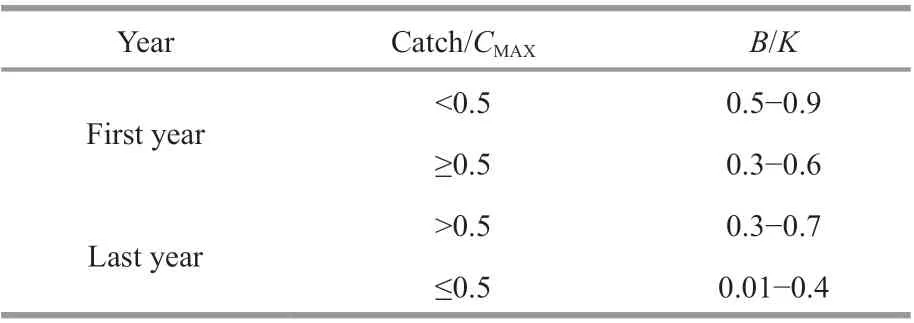
Table 1 Default values for initial and fi nal stock status
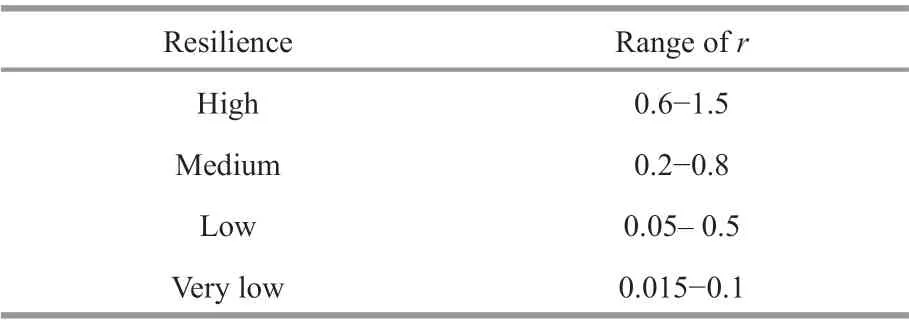
Table 2 Empirical distribution for parameter r
For the detection of viabler-Kcombinations, a randomr-Kpair was selected from within the prior ranges forrandK. Subsequently, a starting biomass was selected from the prior biomass range for the fi rst year, and Eq.1 or Eq.2 was used to calculate the predicted biomass in subsequent years. In this study, 0 was assigned when the depletion level led to the population exceedingKor going extinct, and 1 was assigned for those results in fi nal depletion level that were betweenγ3andγ4. Therefore, the likelihood function of the parameter vectorΘ={K,r} can be expressed as follows:

Each combination ofr-Kthat could result in a practicable stock in the last year of the data series was derived from this function. The sampling procedure was used to obtain the joint distribution of parametersrandK, and 10 000 iterations were processed for each situation. The geometric mean was selected because it can better capture the distributions ofr,K, and MSY (Zhang et al., 2018). According to the Schaefer production model, the MSY can be estimated byr×K/4. The standard deviation of logarithmic mean was used as a measure of uncertainties; hence, approximately 95% of MSY estimates would fall in this range. Five levels of process errors, namely, 0, 0.01, 0.05, 0.10, and 0.15, were considered.
2.3 Scenario
According to the priors of the parameters and catch data series, the model was run with 17 scenarios (Table 3). The prior distributions ofrwere set as informative and non-informative priors. To account for the uncertainty as much as possible, the lowerlimits ofrwere set to 0.40 and 0.35, respectively (see S4A and S4B).Kalso uses a prior distribution with information and no information, as shown in Table 3 below, where S1A and S1B were used for the MSY estimation of the Pacifi c saury in the NPO. The other scenarios were sensitive analysis scenarios. Additionally, this study also compares the impact of diff erent catch time series on the evaluation model (see S5_1960 to S5_2000).
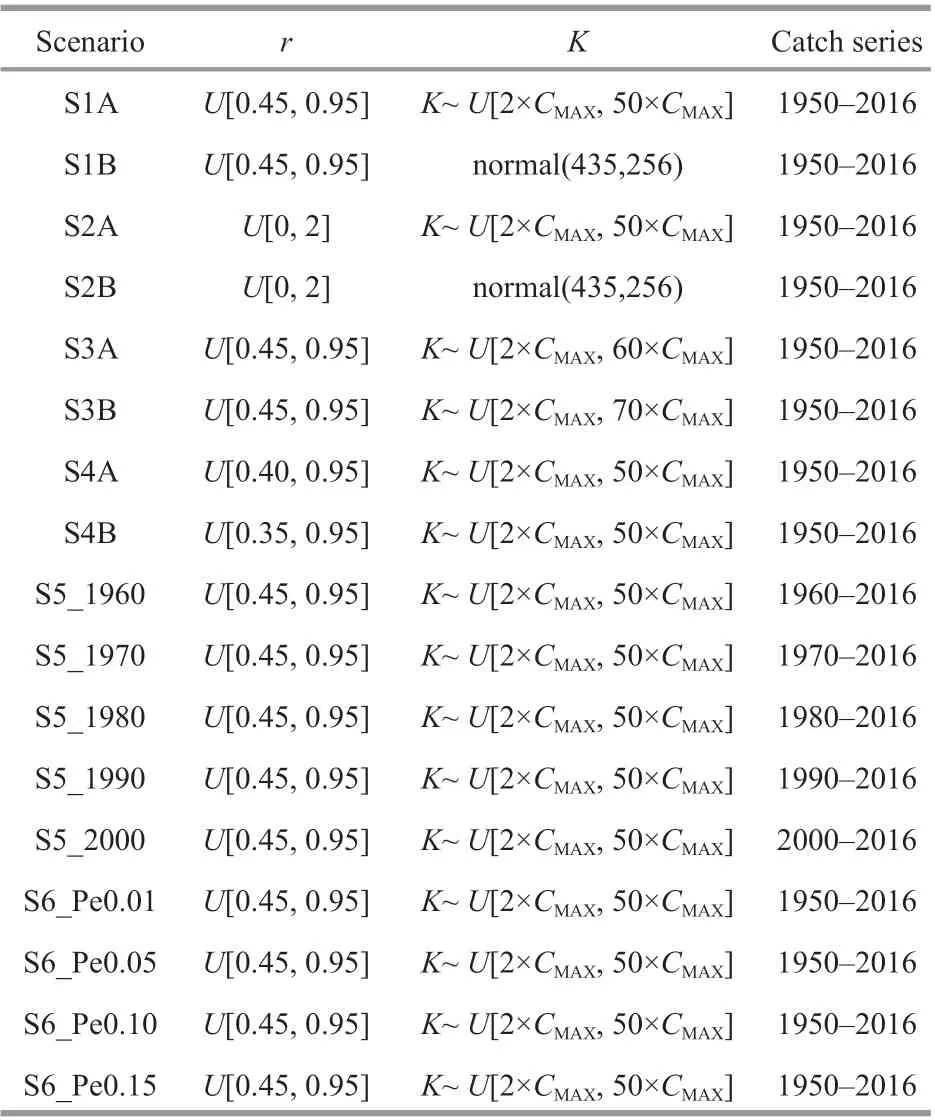
Table 3 Catch data and prior assumptions of parameters for models
3 RESULT
3.1 Catch-MSY model results under base case
The graphical outputs of the Pacifi c saury are shown in Figs.2 and 3 in accordance with the result of the Catch-MSY model under base case. There are no signifi cant diff erences between the results of the two scenarios. In scenario S1A, Fig.2a shows the time series of catches with an overlaid estimate of MSY=47.37×104t and limits (41.57×104t to 53.17×104t) that contain about 95% of the MSY estimates derived from ther-kpairs (Fig.2). In scenario S1B, the overlaid estimate is MSY=47.53×104t with the limits ranging from 41.79×104t to 53.27×104t (Fig.3). From Figs.2b & c, 3b & c, the posterior estimation ofKconcentrated on a narrow range, whereasrhad a broad posterior estimation covering the prior range, and there are obvious signifi cant inverse correlations between ln(r) and ln(K). Figures 2d, e, f & 3d, e, f show the posterior densities ofr,K, and MSY, respectively. Table 4 shows the parameters and reference points of the Pacifi c saury in the NPO from S1A and S1B.
3.2 Sensitive analysis
When using the non-informative priors of parameterr, the posterior distribution ofKhad a broader range than when using informative priors ofr(Fig.4a). When using the informative priors of parameterr, the smaller lower limitr, the larger mean value of the posterior distribution ofK, and the broader distribution ofKvalues were used to maintain those yields (Fig.4b). There are no signifi cant diff erences of the posterior

Table 4 Management-related parameters and reference points of the Pacifi c saury in the NPO
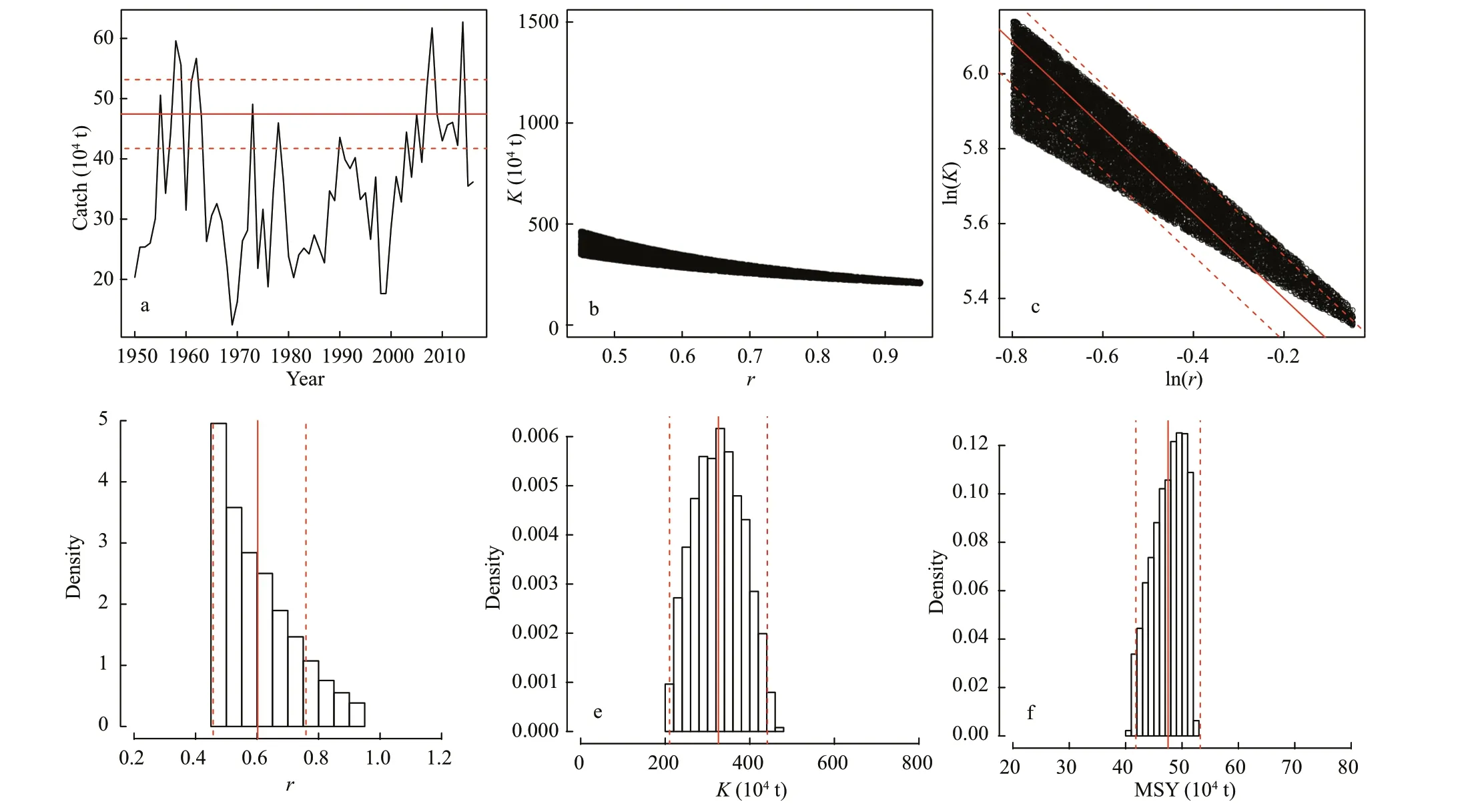
Fig.3 Model outputs in case of no process errors for the Pacifi c saury in the NPO from S1B

Fig.4 Prior and posterior distribution of the key parameters based on diff erent scenarios
Fig.2 Model outputs in case of no process errors for the Pacifi c saury in the NPO from S1A distribution ofrwhen using non-informative priors and informative priors ofK(Fig.4c). As shown in Fig.4d, if the larger upper limit ofKwas chosen, the mean value of the posterior distribution ofrwould be larger and the range ofrwould be wider.
Upon comparing the eff ects of diff erent prior distributions ofrandKon the estimated MSY, for ther, the MSY increased gradually with an increasing lower limit of the prior distribution ofr(Fig.5a). The MSY is more discrete when the wider range prior distribution ofris given. For theK, we can see that the upper limit ofKonly slightly infl uences on the distribution of MSY when using the informative priors of parameterr(Fig.5b).
When applying the Catch-MSY model for the Pacifi c saury, we considered the infl uence of diff erent levels of process error. For scenario S1A (Fig.6), there was no signifi cant change in the percentage relative bias (PRB) ofr, whereas PRB ofKdecreased as the process error increased. When the process error was 0.15, the PRB of MSY was the greatest. For scenario S1B (Fig.7), the results are similar to those of scenario S1A. The PRB ofKand MSY decreased as the process error increased, whereas there was no signifi cant variance in the PRB ofr.
3.3 The infl uence of catch time series on the estimation of MSY
According to the catch data of the Pacifi c saury in the NPO (1950–2016) (Fig.1), the MSY was estimated using diff erent catch time series. The maximum estimated MSY is 48.05×104t when the 1960–2016 catch time series was selected, and the minimum estimated MSY is 47.15×104t when the 1970–2016 catch time series was selected (Fig.8). There is a little fl uctuation of MSY depending on the dataset, which means that the time series of catch data has a limited impact on the estimation of MSY, whereas the results of the model are sensitive to the annual catch in the fi rst and last years.
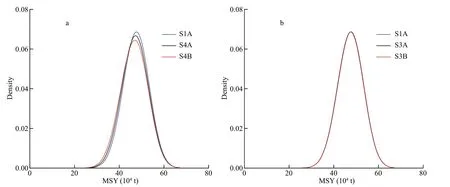
Fig.5 Estimated MSY based on diff erent scenarios

Fig.6 Percentage relative bias of r, K, and MSY estimated at diff erent process errors for the Pacifi c saury in the NPO from S1A

Fig.7 Percentage relative bias of r, K, and MSY estimated at diff erent process errors for the Pacifi c saury in the NPO from S1B
4 DISCUSSION
4.1 Model selection and performance
The Pacifi c saury is characterized by its short life span, with individuals seldom exceeding two years of age (Suyama, 2002; Hua et al., 2017). Moreover, the Pacifi c saury stock abundance is highly dependent on the annual recruitment being successful, and its biomass can fl uctuate wildly as the environment changes (Tian et al., 2002; Chow et al., 2009). Owing to the lack of long-term series catch-at-age data and systematic biological research, the application of a fully age-structured stock assessment model for a short-lived species such as the Pacifi c saury might be questionable and diffi cult (Guan et al., 2013; Wang et al., 2016; Shi et al., 2018). The Catch-MSY model is an internationally listed method that has been used successfully on other stocks, particularly for fi sheries with limited data (Froese et al., 2017). It is a simpler and less data-demanding method that is based on the time series of catch data and basic life history information, which is suitable for the current Pacifi c saury fi shery. Therefore, it is reasonable to use the Catch-MSY model to estimate the MSY for the Pacifi c saury.
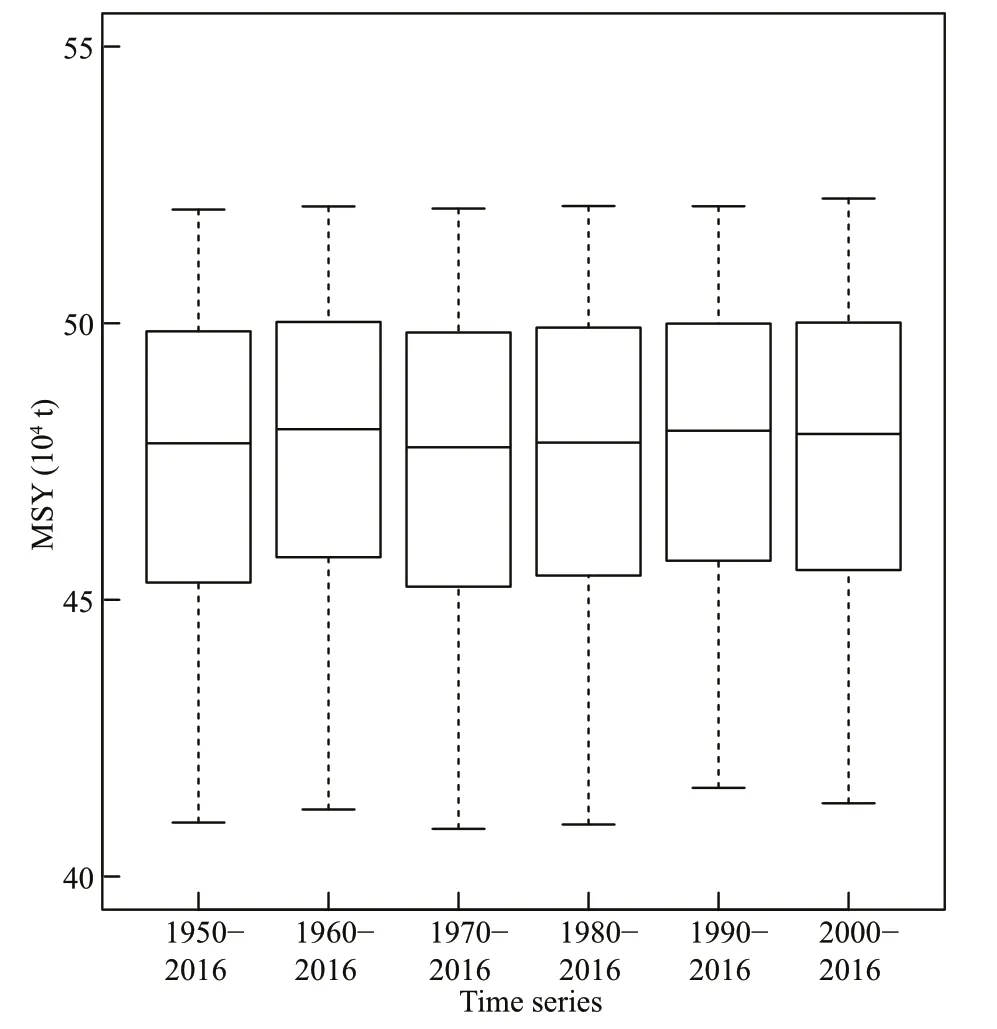
Fig.8 MSY of the Pacifi c saury estimated by the Catch-MSY model based on diff erent time series
Table 4 shows that MSY of the Pacifi c saury, estimated using the Catch-MSY method, was 47.37×104t. Shi et al. (2019) determined the estimated MSY on the basis of the Bayesian Schaefer surplus production model as 75.26×104t; meanwhile, an MSY of 57.07×104t was obtained by NPFC (2017) using a Bayesian state-space model. These results are not consistent with the results of our study. The reasons for this diff erence may be the use of diff erent sources of fi shery data and diff erent models (Punt and Hilborn, 1997; Li et al., 2010; Jiao et al., 2011). NPFC (2017) used the Japanese survey data to fi t the Bayesian state-space model, whereas Shi et al. (2019) applied a Bayesian Schaefer surplus production model using Chinese fi shery data. The Schaefer surplus production model and Bayesian state-space model are more complex than the Catch-MSY model, fi t more types of fi shery data, and take process and observation errors into account. Hence, the estimated MSY from the previous studies should be considered when we provide management advice for the Pacifi c saury in the NPO. Further, the Catch-MSY model is prone to underestimating the MSY (Martel and Froese, 2013). Therefore, when developing management objectives on the basis of the results of the present study, one should take the underestimated MSY values into consideration.
4.2 Sensitive analysis
The sensitivity analysis shows that the posterior distribution ofKwould have a broader range when using the non-informative priors ofr, which may infl ate the estimates of MSY produced by the Catch-MSY model. Martell and Froese (2013) observe that the estimates of the most probable central values forrandKare strongly dependent on the lower limit chosen forrand the upper limit chosen forK. In this study, diff erent lower limit of r and diff erent upper limit ofKwere set to conduct the sensitive analysis. The results show that the smaller the lower limitr, the larger the mean value of the posterior distribution ofK, and if the larger upper limit ofKwas chosen, the range ofrwould be wider, which corresponded with Martell and Froese’s (2013) conclusion. In the sensitivity analysis, we also found that the MSY increases gradually with an increase in the lower limit of the prior distribution ofr(Fig.5a). Consequently, the inaccuratervalues directly cause an underestimation or overestimation of the MSY and aff ect the development of management measures. Therefore, using demographic methods to estimate a prior distribution forrof the Pacifi c saury is a future research direction. Diff erent process error levels had diff erent infl uences on the estimated parameters and MSY. Compared torandK, process error has a greater impact on MSY. In order to apply the Catch-MSY model more accurately, the process error needs to be selected carefully.
In this study, we set up six diff erent time series scenarios, and the estimated MSY are similar. The results of the model are not sensitive to the length of catch data time series. However, because we set the default ranges of relative biomass in the fi rst and last years of the time series (Froese and Demirel, 2017), the results of the model were very sensitive to catch data in the fi rst and last years. Consequently, the use of ranges of relative biomass may also need to be justifi ed on the basis of an understanding of the development of each fi shery. This would improve the accuracy of the results of the model.
4.3 Management advice
The Pacifi c saury fi shery began before 1950, but the catch was low during those years. The trajectories of estimated MSY and catch (Figs.2 & 3) demonstrated that the Pacifi c saury fi shery suff ered from overfi shing between the mid-1950s and the early 1960s as well as for several years during the 2000s. The catches were closer to the MSY during these years, whereas in recent years, the catches were under the MSY and were not harmful to the Pacifi c saury population. This conclusion is consistent with previous studies by Shi et al. (2019) and NPFC (2017). According to the principles of MSY-based management suggested by Martell and Froese (2013), the lower margin of error of MSY should be used as a target for Total Allowable Catch or TAC if stock sizes were above 0.5K. The MSY of this study is 47.37×104t, whereas Shi et al. (2019) arrived at a MSY result of 75.26×104t by using the Bayesian Schaefer production model to evaluate the status of the Pacifi c saury in the NPO according to the Chinese saury fi shery data. Given that the Catch-MSY model may underestimate MSY, the management target should be set between 50×104t and 70×104t.
4.4 Uncertainty of the Catch-MSY model
On the basis of our understanding of the Catch-MSY model and the results of this study, we can conclude that the uncertainty of the models comes primarily from the following. First, there is the uncertainty associated with the time series of catch data because these data evinced observation errors in the process of collection. Second, there is the uncertainty of model parameters because in this model, we assumed that the prior range for the parameters is reasonable; however, owing to the lack of systematic biological research, this may induce biases in the estimation of the MSY and the biomass of the Pacifi c saury. Additionally, a stationary production formula was assumed, meaning that there were no changes in the parameters of the Schaefer production model over time. To evaluate the sensitivity to the assumed priors, further exploration is needed. Third, since we operate on the basis of a surplus production model, growth, mortality, and recruitment are pooled in the same equation, inevitably ignoring the individual processes. Moreover, the impact of environmental factors on the resources of the Pacifi c saury was ignored.
In summary, this study showed that the Catch-MSY mode could be used to estimate MSY for the Pacifi c saury and consequently be used to supply some management advice for this data-poor fi shery. This model may also provide a good selection for the MSY estimation of other data-poor fi sheries. Finally, these fi ndings suggest that more types of fi shery data should be collected in future studies, which should subsequently conduct stock assessments of the Pacifi c saury using traditional stock assessment models.
5 CONCLUSION
As one of the most important commercial species in the NPO, the catches of the Pacifi c saury are increasing every year. However, the stock assessment research of this species was limited and experienced considerable uncertainty. The Catch-MSY model is a promising approach for estimating MSY for datalimited fi sheries. The MSY estimation for the Pacifi c saury was carried out in Catch-MSY model in our study, in which 17 scenarios according to diff erent prior distributions of therandKwere established for sensitivity analysis. We identifi ed that the MSY increases with an increasing lower limit ofrand the results of the model are sensitive to the annual catch in the fi rst and last years. The estimated MSY of the Pacifi c saury was 47.37×104t (41.57×104t to 53.17×104t) in scenario S1A and 47.53×104t (41.79×104t to 53.27×104t) in scenario S1B. Considering the uncertainty of the Catch-MSY model, it is recommended that the management target be kept between 50×104t and 70×104t as a better management regulation. The Catch-MSY model can be a better choice for the MSY estimation of data-poor species such as the Pacifi c saury. Additionally, more types of fi shery data should be collected in future studies; subsequently, stock assessments of the Pacifi c saury could be conducted using traditional stock assessment models, which may provide more reasonable suggestions for the development and management of the Pacifi c saury.
6 AUTHOR DECLARATION AND DATA AVAILABILITY
The authors declare that they have no confl ict of interest.
All applicable international, national, and/or institutional guidelines for the care and use of animals were followed.
The datasets created during and/or analyzed during the current study are available from the corresponding author upon reasonable request.
7 ACKNOWLEDGMENT
We thank all the reviewers for their valuable comments and advice. Thanks are also given to other laboratory colleagues for fi eld and laboratory work assistance.
References
Alverson D L, Pereyra W T. 1969. Demersal fi sh explorations in the northeastern Pacifi c Ocean—an evaluation of exploratory fi shing methods and analytical approaches to stock size and yield forecasts.JournalofFisheriesResearchBoardofCanada, 26(8): 1 985-2 001.
Arnold L M, Heppel S S. 2015. Testing the robustness of datapoor assessment methods to uncertainty in catch and biology: a retrospective approach.ICESJournalofMarineScience, 72(1): 243-250.
Carruthers T R, Punt A E, Walters C J, MacCall A, McAllister M K, Dick E J, Cope J. 2014. Evaluating methods for setting catch limits in data-limited fi sheries.FisheriesResearch, 153: 48-68.
Chow S, Suzuki N, Brodeur R D, Ueno Y. 2009. Little population structuring and recent evolution of the Pacifi c saury (Cololabissaira) as indicated by mitochondrial and nuclear DNA sequence data.JournalofExperimentalMarineBiologyandEcology, 369(1): 17-21.
Chrysafi A, Kuparinen A. 2016. Assessing abundance of populations with limited data: Lessons learned from datapoor fi sheries stock assessment.EnvironmentalReviews, 24(1): 245-250.
Dick E J, MacCall A D. 2011. Depletion-based stock reduction analysis: a catch-based method for determining sustainable yields for data-poor fi sh stocks.FisheriesResearch, 110(2): 331-341.
FAO. 2016. Report of the FAO/CECAF Working Group on the Assessment of Small Pelagic Fish-Subgroup South. CECAF/ECAF SERIES 12/74, FAO, Accra, Ghana.
Froese R, Demirel N, Coro G, Kleisner K M, Winker H. 2017. Estimating fi sheries reference points from catch and resilience.FishandFisheries, 18(3): 506-526.
Froese R, Pauly D. 2015. FishBase. World Wide Web electronic publication. www.fi shbase.org. Accessed on 2015-10.
Froese R, Zeller D, Kleisner K, Pauly D. 2012. What catch data can tell us about the status of global fi sheries.MarineBiology, 159(6): 1 283-1 292.
Guan W J, Tang L, Zhu J F, Tian S Q, Xu L X. 2016. Application of a Bayesian method to data-poor stock assessment by using Indian Ocean albacore (Thunnusalalunga) stock assessment as an example.ActaOceanologicaSinica, 35(2): 117-125.
Guan W J, Tian S Q, Zhu J F, Chen X J. 2013. A review of fi sheries stock assessment models.JournalofFisherySciencesofChina, 20(5): 1 112-1 120. (in Chinese with English abstract)
Hua C X, Gao Y Z, Zhu Q C, Zhou Y F, Li S S. 2017. Age and growth of Pacifi c saury (Cololabissaira) in the northwest Pacifi c Ocean Based on statolith microstruture.ActaOceanologicaSinica, 39(10): 46-53. (in Chinese with English abstract)
Hua C X, Zhu Q C, Xu W. 2010. Fishing ground distribution ofcololabissairain the Northwestern Pacifi c.ShandongFisheries, 27(10): 10-13. (in Chinese with English abstract)
Ito S, Kishi J M, Kurita Y, Oozeki Y, Yamanaka Y, Megrey B A, Werner F E. 2004. Initial design for a fi sh bioenergetics model of Pacifi c saury coupled to a lower trophic ecosystem model.FisheriesOceanography, 13(S1): 111-124.
Iwahashi M, Isoda Y, Ito S, Oozeki Y, Suyama S. 2006. Estimation of seasonal spawning ground locations and ambient sea surface temperatures for eggs and larvae of Pacifi c saury (Cololabissaira) in the western North Pacifi c.FisheriesOceanography, 15(2): 125-138.
Jiao Y, Cortés E, Andrews K, Guo F. 2011. Poor-data and datapoor species stock assessment using a Bayesian hierarchical approach.JournalofAppliedEcology, 21(7): 2 691-2 708.
Li G, Chen X J, Guan W J. 2010. Stock assessment and risk analysis of management strategies forScomberjaponicusin the East China Sea and Yellow Sea using a Bayesian approach.JournalofFisheriesofChina, 34(5): 740-750. (in Chinese with English abstract)
MacCall A D. 2009. Depletion-corrected average catch: a simple formula for estimating sustainable yields in datapoor situations.ICESJournalofMarineScience, 66(10): 2 267-2 271.
Magnusson A, Hilborn R. 2007. What makes fi sheries data informative?FishandFisheries, 8(4): 337-358.
Martell S, Froese R. 2013. A simple method for estimating MSY from catch and resilience.FishandFisheries, 14(4): 504-514.
Nakaya M, Morioka T, Fukunaga K et al. 2010. Growth and maturation of Pacifi c sauryCololabissairaunder laboratory conditions.FisheriesScience, 76(1): 45-53.
North Pacifi c Fisheries Commission. 2018. NPFC Yearbook 2017. 385p. Available at www.npfc.int
NPFC PSWG. 2017. Report of the 1st Meeting of the Technical Working Group on Pacifi c Saury Stock Assessment. NPFC-2017-TWG PSSA01-Final Report. NPFC, Shanghai, China. p.43-74.
Punt A E, Hilborn R. 1997. Fisheries stock assessment and decision analysis: the Bayesian approach.ReviewsinFishBiologyandFisheries, 7(1): 35-63.
Punt A E, Smith D C, Smith A D M. 2011. Among-stock comparisons for improving stock assessments of datapoor stocks: the “Robin Hood” approach.ICESJournalofMarineScience, 68(5): 972-981.
Punt A E. 2011. Extending production models to include process error in the population dynamics.CanadianJournalofFisheriesandAquaticSciences, 60(10): 1 217-1 228.
Restrepo V R, Thompson G G, Mace P M, Gabriel W L, Low L L, MacCall A D, Methot R D, Power J E, Taylor B L, Wade P R, Witzig J F. 1998. Technical Guidance on the Use of Precautionary Approaches to Implementing National Standard 1 of the Magnuson-Stevens Fishery Conservation and Management Act. US Department of Commerce, National Oceanic and Atmospheric Administration, National Marine Fisheries Service, Seattle. 1998.
Sakurai Y, Kiyofuji H, Saitoh S, Goto T, Hiyama Y. 2000. Changes in inferred spawning areas ofTodarodespacifi cus(Cephalopoda: Ommastrephidae) due to changing environmental conditions.ICESJournalofMarineScience, 57(1): 24-30.
Schaefer M B. 1991. Some aspects of the dynamics of populations important to the management of the commercial marine fi sheries.BulletinofMathematicalBiology, 53(1-2): 253-279.
Shi Y C, Zhu Q C, Hua C X, Zhang Y D, Hua C X, Zhou W B. 2016. Factors infl uencing the rope tension of saury stickheld lift nets.JournalofFisherySciencesofChina, 23(3): 704-712. (in Chinese with English abstract)
Shi Y C, Zhu Q C, Hua C X, Zhang Y D. 2018. Sinking and rising performance of saury stick-held based on fi eld measurements.MarineScienceBulletin, 37(4): 459-467. (in Chinese with English abstract)
Shi Y C, Zhu Q C, Huang S L, Hua C X. 2019. Stock assessment of pacifi c suary (CololabisSaira) in the northwest pacifi c using a bayesian schaefer model[J].ProgressinFisherySciences, 40(5): 1-10, https://doi.org/10.19663/j.issn2095-9869.20180611001. (in Chinese with English abstract)
Sun M C, Ye X C, Zhang J, Qian W G. 2003. Probe into Pacifi c saury fi sheries in the northwest Pacifi c Ocean.MarineFisheries, 25(3): 112-115. (in Chinese with English abstract)
Suyama S, Nakagami M, Naya M, Ueno Y. 2012. Migration route of Pacifi c sauryCololabissairainferred from the otolith hyaline zone.FisheriesScience, 78(6): 1 179-1 186.
Suyama S. 2002. Study on the age, growth, and muturation process of Pacifi c sauryCololabissaira(Brevoort) in the North Pacifi c.BulletinofFisheriesResearchAgency, 5: 68-113.
Tian Y J, Akamine T, Suda M. 2003. Variations in the abundance of Pacifi c saury (Cololabissaira) from the northwestern Pacifi c in relation to oceanic-climate changes.FisheriesResearch, 60(2/3): 439-454.
Tian Y J, Akamine T, Suda M. 2004. Modeling the infl uence of oceanic-climatic changes on the dynamics of Pacifi c saury in the northwestern Pacifi c using a life cycle model.FisheriesOceanography, 13(S1): 125-137.
Tian Y J, Ueno Y, Sud M, Akamine T. 2002. Climate-ocean variability and the response of Pacifi c saury (Cololabissaira) in the northwestern Pacifi c during the last half century.FisheriesScience, 68(S1): 158-161.
Tseng C T, Su N J, Sun C L, Punt A E, Yeh S Z, Liu D C, Su W Cet al. 2013. Spatial and temporal variability of the Pacifi c saury (Cololabissaira) distribution in the northwestern Pacifi c Ocean.ICESJournalofMarineScience, 70(5): 991-999.
Wang J T, Yu W, Chen X, Chen Y. 2016. Stock assessment for the western winter-spring cohort of neon fl ying squid (Ommastrephesbartramii) using environmentally dependent surplus production models.ScientiaMarina, 80(1): 69-78.
Wetzel C R, Punt A E. 2011. Model performance for the determination of appropriate harvest levels in the case of data-poor stocks.FisheriesResearch, 110(2): 342-355.
Xia H. 2008. The Illumination Distribution Model of the Pacifi c Saury (Cololabissaira) Stick-held Dip Net Fishing. Shanghai Ocean University, Shanghai. p.1-54. (in Chinese with English abstract)
Yang X L, Wang P F, Jiao Y L, Zhou Q L, Li H D, Li Y C, Liu G, Zhang H G. 2005. Study on the culture technique in the middle stage and the growing character ofApostichopusjaponicus.ShandongFishery, 22(10): 43-46. (in Chinese with English abstract)
Yu Y F, Zhang X, Huang H L, Xu B S, Wang M Y. 2006. Study on attracting fi sh method of stick-held net forCololabissaira.JournalofZhejiangOceanUniversity:NaturalScience, 25(2): 154-156. (in Chinese with English abstract)
Zavolokin A. 2018. Priority species. NPFC. https://www.npfc.int/priority-species. Accessed on 2018-06-09.
Zhang K, Zhang J, Xu Y W, Sun M S, Chen Z Z, Yuan M. 2018. Application of a catch-based method for stock assessment of three important fi sheries in the East China Sea.ActaOceanologicaSinica, 37(2): 102-109.
Zhang Y, Zhu Q C, Yan L, Shang L L. 2013. Preliminary Study on Biological Characteristics ofCololabisSairain the Northwest Pacifi c Ocean in Spring.TransactionsofOceanologyandLimnology, (1): 53-60. (in Chinese with English abstract)
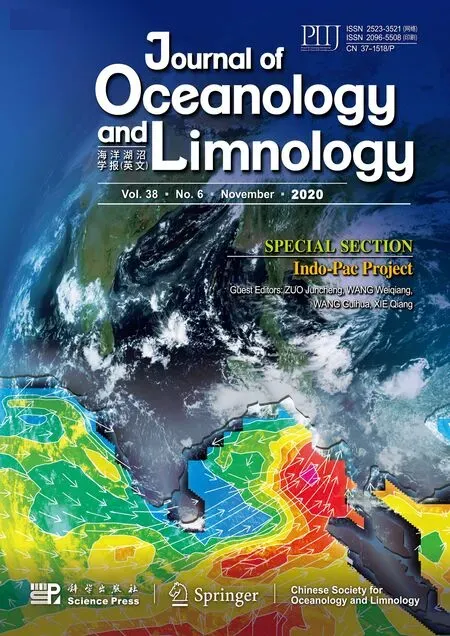 Journal of Oceanology and Limnology2020年6期
Journal of Oceanology and Limnology2020年6期
- Journal of Oceanology and Limnology的其它文章
- Eff ects of vitamin C defi ciency or excess on growth performance, anti-oxidative response and fatty acid composition of juvenile abalone Haliotis discu s hannai Ino*
- Exploring sensitive area in the tropical Indian Ocean for El Niño prediction: implication for targeted observation*
- Analysis of the typhoon wave distribution simulated in WAVEWATCH-III model in the context of Kuroshio and wind-induced current*
- Characterizing the capability of mesoscale eddies to carry drifters in the northwest Pacifi c*
- Observation system simulation experiments using an ensemble-based method in the northeastern South China Sea*
- Statistical analysis of intensity variations in tropical cyclones in the East China Sea passing over the Kuroshio*
